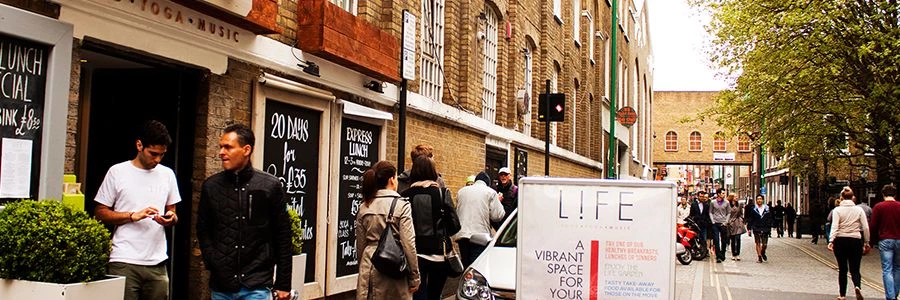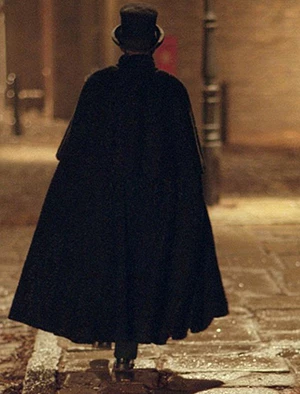Get an instant valuation here or contact one of our offices


So much has changed or is about to change in Whitechapel that’s it’s almost impossible to keep up. Perhaps the most significant development for the area, once notoriously the stomping ground or Jack the Ripper and today home to a large and vibrant Bengali community, will be the imminent arrival of the Elizabeth line. This will transform Whitechapel station (Underground and Overground) into a major transport hub, putting Canary Wharf, London Liverpool Street and Stratford stations just one stop away, while providing a direct link to Heathrow Airport. Combine this with the fact the area is currently undergoing a £300 million regeneration master plan, hailed as The Whitechapel Vision by Tower Hamlets, with the aim of creating employment, lifestyle and education opportunities, then it’s clear that Whitechapel is fast becoming the place to be in east London.
Indeed, investors and city workers are already waking up to this fact, and better still, there’s plenty of affordable properties to be found here, certainly when compared to the area’s more affluent neighbours.
One of the area’s most famous landmarks is the Royal London Hospital, built in 1757 and famously a refuge for John Merrick, better known as the Elephant Man. After redevelopment and expansion, however, an 18-storey, new hospital was unveiled in 2016, but work is currently underway to convert the old, Grade II listed hospital building into the new Whitechapel Civic Centre for Tower Hamlets Council.
Properties here are varied, with fine Georgian houses, luxury warehouse conversions and new flats nestled beside estates of social housing. The area is very culturally diverse and changing, with more professionals and creatives increasingly moving to the area.
For families – more than 40 per cent of the area’s residents are made up of families – there is a wide selection of outstanding Ofsted rated schools at both primary and secondary level. Oustanding primaries include The Aldgate School (formerly Sir John Cass’s Foundation Primary School) and Thomas Buxton, while Swanlea and Morpeth are both rated oustanding.
Although just a short distance from trendy Brick Lane, Whitechapel Market has little of its neighbour’s hipster vibes, being a traditional market, largely serving the British Bangladeshi community, and to be honest, it’s all the better for that. Here you can hunt for bargains under the striped awnings or perhaps pick up the ingredients for a curry. As well as every Asian spice under the sun, here you’ll also find jewellery, clothing, electrical goods and all manner of knick-knacks, so well worth a visit.
A little further along the High Street you’ll find the Whitechapel Gallery. The original building dates back to 1901 and was one of the first publicly-funded galleries for temporary exhibitions, with both Pablo Picasso and Jackson Pollock exhibiting here. The venue is also recognised for helping to launch David Hockney and the Pop Art movement. Following a major redesign and expansion in 2009, the Whitechapel Gallery has emerged as one of the country’s great cultural hubs, offering free exhibitions, collection displays, film screenings, public debates and a world-class bookshop and restaurant.
If all that culture has made you thirsty, then The Castle pub is just a three-minute stroll from the gallery on Commercial Road, and just happens to be one of our favourite boozers. Offering great service, friendly faces (the mixed crowd actually chat to each other here), reasonably priced drinks and plenty of space, it’s a great place to spend the evening, plus there are usually DJs in the basement and live music and comedy on the top floor.
How to round off your night? Why with a curry of course and with 20 Indian restaurants located on Brick Lane alone, you will not be short of choice. However, you’ll find our favourite curry house, Tayyabs, on Fieldgate Street, a no frills Punjabi restaurant that first opened its doors back in 1972 and has subsequently earned the prefix ‘legendary’. Just thinking about their karahi lamb chop masala is making us seriously salivate!
508 Roman Road
Bow
London
E3 5LU
020 8102 1236
london@butlerandstag.com
Whitechapel is steeped in rich history, from the bustling maritime industry which served the Royal Navy, the notorious killings of 'Jack the Ripper', countless bombings from German attacks and the Whitechapel High Street and market.
Whitechapel High Street and Whitechapel Road now form part of the A11, ancient history suggests that they were once part of the Roman road leading from London to Colchester, Essex. Years later travellers to and from London were accommodated along the route by the many coaching inns along Whitechapel Road.
By the late 16th century, the suburb of Whitechapel and surrounding area was known as poor London. Areas located east of Aldgate outside the City Walls and beyond official controls, attracted tanneries, breweries, foundries, slaughter and work houses.
By 1840 rapidly expanding East London had evolved, suffering problems of overcrowding, poverty, crime and widespread disease. Roads branching from Whitechapel High Street were like warrens of small dark alleys and known for filth, suffering and danger. Dorset Street which is now a private alley was once described as London's worst street.
By the Victorian era poverty stricken Whitechapel had begun to swell again from immigrants far and wide but in particular Jewish and Irish. Jewish Actor, Jacob Adler once wrote 'The further we penetrated into Whitechapel the more our hearts sank'. In October 1888 the Metropolitan Police estimated that there were 1,200 low class prostitutes in Whitechapel and about 62 brothels. The prostitutes and the brothels would become synonymous with the 'Jack The Ripper' story with many being brutally murdered.
Joseph Merrick the 'Elephant Merrick' became well know in Whitechapel after he was exhibited in a shop on the Whitechapel Road before being helped by Dr Frederick Treves at the Royal London Hospital. A museum of his life still remains in the hospital to this day.
Following the war, Whitechapel stood largely derelict and unpopulated, however housing reformation plans went ahead n the 1950's affording many Londoner's to be re-housed. Today, integrated with dynamic modern developments which have changed the face of the area, the old fashioned architecture can be seen throughout, providing a glimpse of how London used to look to the middle classes that now frequent the area.

“ The service provided by the entire team at Butler and Stag is fantastic. From purchasing a plot, to the sale of the properties was run fantastically. Very professional outfit and a pleasure to work with. We certainly will be using Butler and Stag again in the near future. ”
Read more reviews
★★★★★ 4.9 Bow (London Office)
★★★★★ 5.0 Theydon Bois (West Essex Office)